Snails are mollusks that belong to the gastropod class. There are thought to be over 43,000 species of snails in the world. They have been categorized into land snails, sea snails, and freshwater snails. Despite many of them sharing the same features, they all have different diets, prefer different habitats, and come in unique shades.
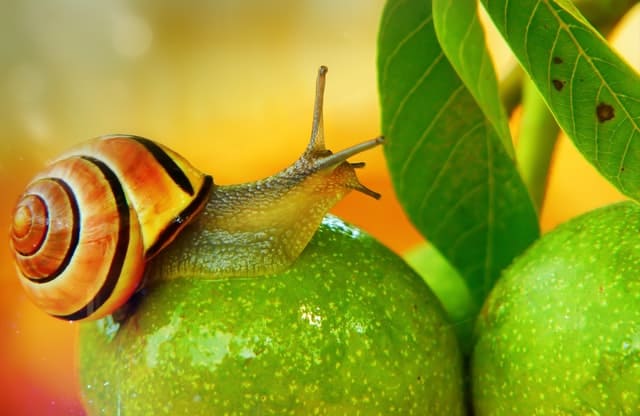
Being a highly adaptive species, snails may be found practically anywhere in the globe. There are snails in your backyard garden, ones that dwell in the snow or the desert, and yet others that would rather live high in trees.
Since they are herbivores, the majority of land snails exclusively consume plant-based foods. While some snails solely consume food derived from animals, many consume both plants and meat. Be cautious since many types of snails are harmful because they carry parasites. However, certain snails are edible to humans and are even regarded as a delicacy in some countries.
Were you aware of:
On the seabed, the first snails are estimated to have existed 550 million years ago. The land snail, which had acquired lungs for breathing, was descended from the sea snail 286 million years ago.
How to Identify Various Types of Snails
Examining it attentively is the simplest way to determine the sort of snail. The majority of snails have shells with a conical form. You can quickly identify the species of snail by counting the number of whorls that are present on the shell. Determining the species may also be aided by the whorls’ profile and relative sizes. There are several varieties of snail shells, including ventricose, extremely thin, and ones with progressively more whorls. You can also tell what you are looking at by the way the skin and shell feel.
Achatinas have pointy apexes, or tips of the shells; Archachatinas have blunt tips. An Archachatina shell has deeper sutures than an Achatina shell. Sutures are the ridges along the spiral groove. Compared to Achatina snails, Archachatina have skin pores that are substantially smaller and closer together.
Advise:
The texture and color of the shell may be enhanced by wetting it.
16 Various Types of Snails
Enormous African land snail
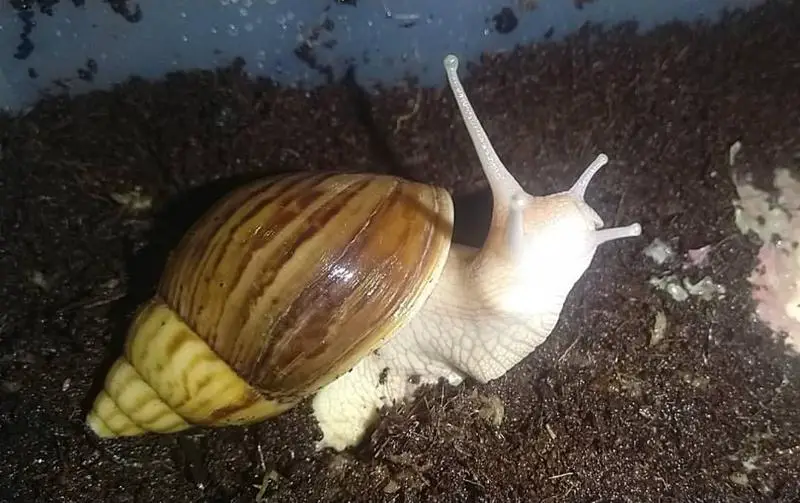
One of the biggest snail species on the planet is the enormous African land snail. As its name implies, it is native to Africa, yet it is found all across the continents save Antarctica. Given that it has a reputation for harming plants and crops, this snail is not welcome. Plant infections are also known to be transmitted by a particular organism, namely giant African land snails.
Among all snails, giant African land snails have the highest metal concentration in their strong, brown shell. They eat fruit, vegetables, and sometimes even cardboard since they are herbivores. This kind of snail has been seen to sometimes consume stones, sand, and even tiny snails. Although some have been reported to live up to ten years, the giant African land snail has an average lifespan of five to seven years.
Were you aware of:
The enormous African land snail has dimensions of around 7.87 inches in length and 2.75 inches in height.
White-Lipped Snail

The white-lipped snail and the brown-lipped snail are very identical. The brown-lipped snail differs from the other lipped snail in that its shell aperture has a brown band around it. In spite of its name, the shell has a wide range of hues, including as pink, red, brown, and yellow.
Typically found in Britain, brown-lipped snails consume decomposing vegetation for their food. Since they like eating old nettles and buttercups, gardeners genuinely consider them to be buddies. Though it inhabits a variety of environments, this land snail prefers moist areas found in gardens, hedgerows, and grasslands.
Apple Snails
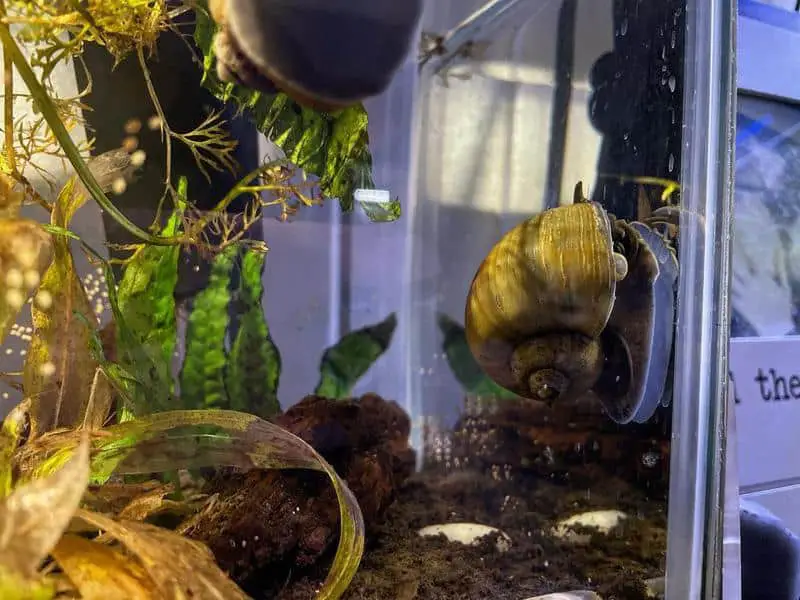
Larger freshwater snails are referred to as apple snails in general. Their striking color palette includes gold, white, blue, and even tiger-striped patterns. In good health, freshwater snails may reach a maximum length of 5.9 inches. They are often maintained as pets, residing in aquariums, because to their size and color.
Vegetables, brine shrimp, fish meal pellets, dead fish, frozen meals, and sometimes insects are the things that apple snails consume. They are regarded as pests in Asia because they emerge from the water to munch on crops, despite the fact that they are pets in the West.
Orchid snails

The reason orchid snails are so tiny is because they can do so much harm to orchids in greenhouses, thus their name. The animal within the disc-shaped shell is blue-gray in tone, despite the disc’s reddish-brown appearance. This invader, which is roughly 6 mm in diameter, is native to North America.
The orchid snail may be found dwelling in cultivated areas, beneath pots, under trash, or in greenhouses. Move this little snail out of the way if you spot it close to your plants.
Assassin Snails
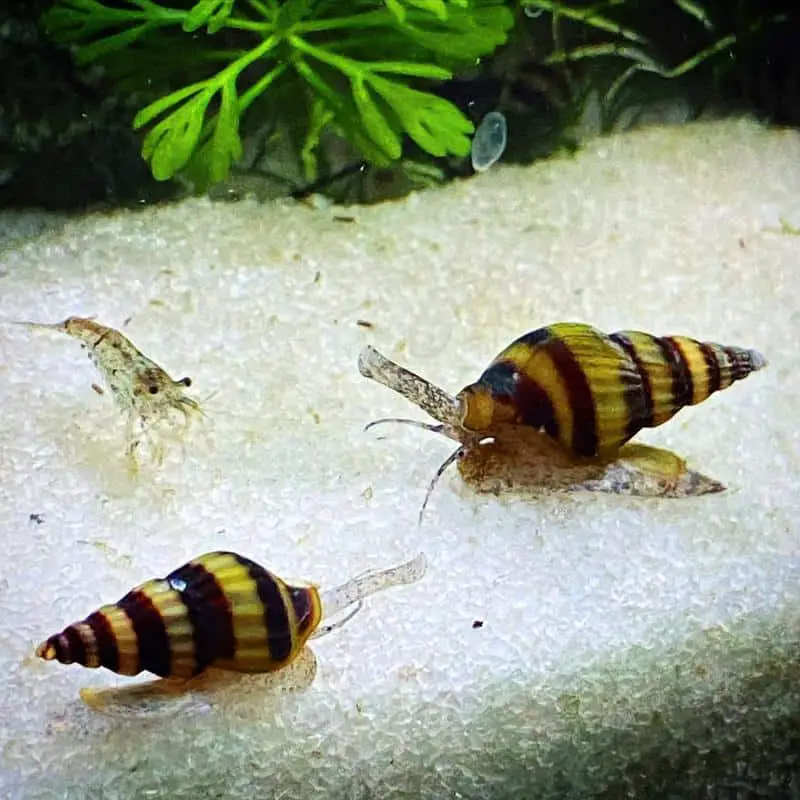
Southeast Asian natives, known as assassin snails, are said to regulate the local snail population. These creatures are mostly carnivores; however, they also consume little shrimp. They are suitable for keeping in aquariums since they dislike eating fish or live plants. They have no desire to consume other members of their own species.
Assassin snails are found in rainforests and are more common in tropical monsoon regions. They inhabit watery habitats, usually found in areas with pliable soil, such as rivers, lakes, ponds, streams, and reservoirs.
Rabbit Snails
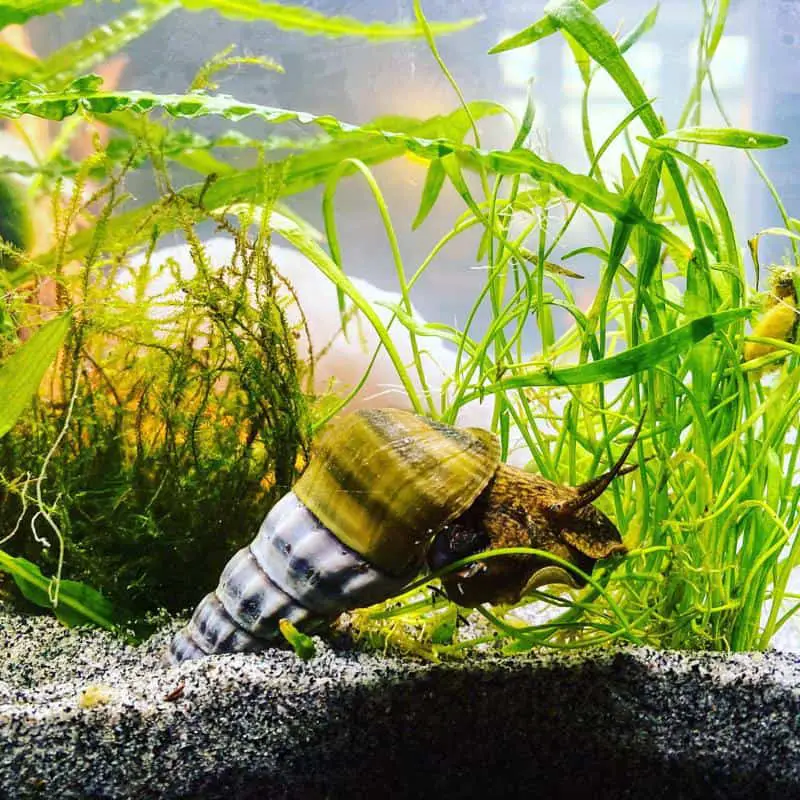
A common breed of freshwater snail named after a rabbit, the rabbit snail. Like lengthy rabbit ears, the two drooping antennae on top of the head have that appearance. Their distinct shell tint and intriguing rough and wrinkled skin make them a popular addition to aquariums. They are native to Indonesia and feed on dead plants, debris, and soft algae.
When fully grown, rabbit snails typically measure just three to five inches in length. They clean the tank wonderfully and are simple to maintain. Their development pace is rapid, therefore it won’t take them long to reach their mature size.
Were you aware of:
Rabbit snails have a one to three-year lifespan in captivity.
Water Snails

Pond snails may be seen as serious pests or as significant assets, depending on the circumstances. These omnivorous snails eat decaying plants, algae, and fish meal. They may proliferate swiftly when fed regularly, yet they are quite harmless among healthy plants.
There are two major families of pond snails, and the primary distinction between them is that one utilizes gills to breathe air, while the other uses lungs. As long as they have access to dead animals and plants, pond snails are happy in any kind of freshwater pond.
Roman Snail
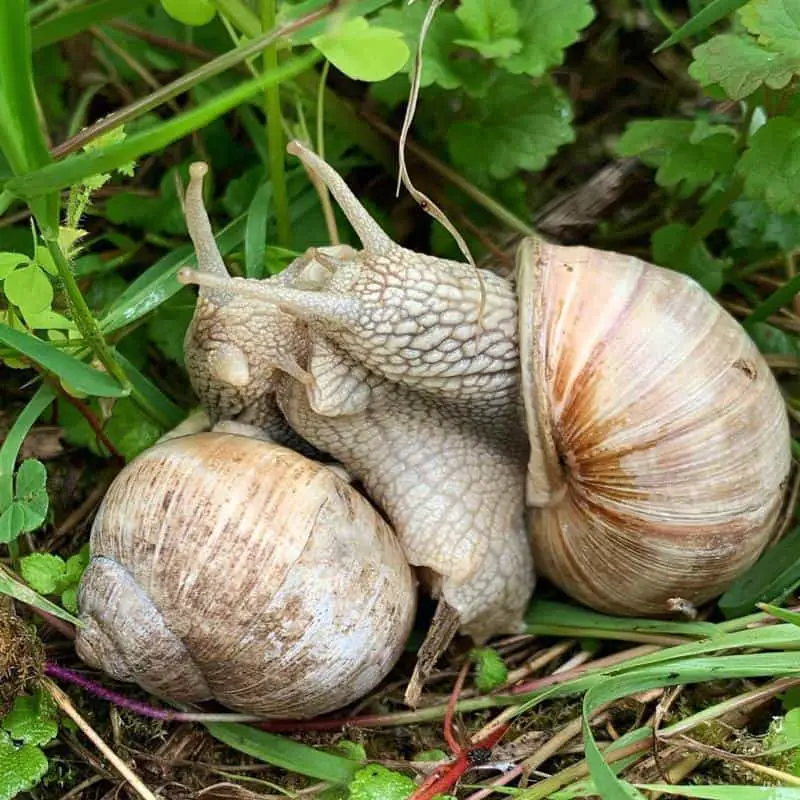
The term “escargot” refers to Roman snails. This big, native European snail is edible and regarded as a delicacy by some. The creamy white or light brown shell of a Roman snail. The shell of a Roman snail makes up almost two thirds of its weight.
They eat fruits, vegetables, flowers, and plants. This particular species of snail favors living in temperate woodlands with low levels of precipitation and humid temperatures. Late April to early October is the active season for Roman snails. They create a hard calcium carbonate cover to seal their shell during their hibernation throughout the winter.
Mediterranean green snail
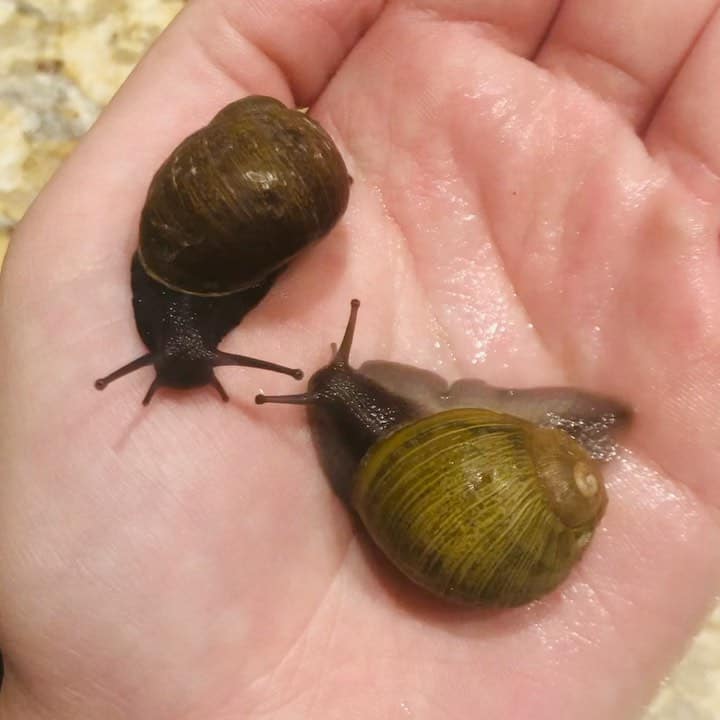
This green-colored land snail may reach a maximum length of 4.72 inches and is also referred to as a green garden snail. They are native to Europe and Africa and live in rainforests. Although they may harm an environment, they are regarded as a nuisance even though they are currently present in the US.
The Mediterranean green snail consumes grasses, crops, and leafy vegetables as part of its herbivorous diet. Over 350 hectares of market gardens and suburban areas were discovered to be infested by this variety of snail in the 1980s.
Milk Snail

Large and air-breathing, the milk snail consumes fruits and plants for food. They are colored differently, although they are often light brown with black stripes spiraling around the shell. Since they may outcompete local snails and wreak havoc on orchards, gardens, and allotments, they are regarded as a nuisance.
Archaeological sites in Morocco have shown that ancient people regularly consumed milk snails, which were once a mainstay in Mediterranean diets. They inhabit Mediterranean climates and are often only seen at night.
Mystery snails

The most popular aquarium snails are undoubtedly mystery snails. Their colorful and attractive shells and effortless ability to remove waste are the key reasons for their popularity. They will comfortably coexist with shrimp and fish since they only consume dead vegetation.
Mystery snails are also quite calm, which is another reason they make wonderful pets. Fish will just retreat if they come across an angry fish. Try to keep them with other calm animals since they are rather mellow and might frighten easily.
Common Whelk

Large and delicious, the common whelk is a sea snail with a red, white, or yellow shell. Just below the low tide line, they reside on sand-covered seabeds. As a carnivore, the common whelk consumes worms, crustaceans, and other mollusks.
With a conical shell that may grow up to 10 cm in length, common whelks are the largest kind of sea snail. The wavy fold pattern helps identify the cream shell.
Were you aware of:
Large hermit crabs often take up residence in common whelk shells that are vacant.
Candy Cane Snails
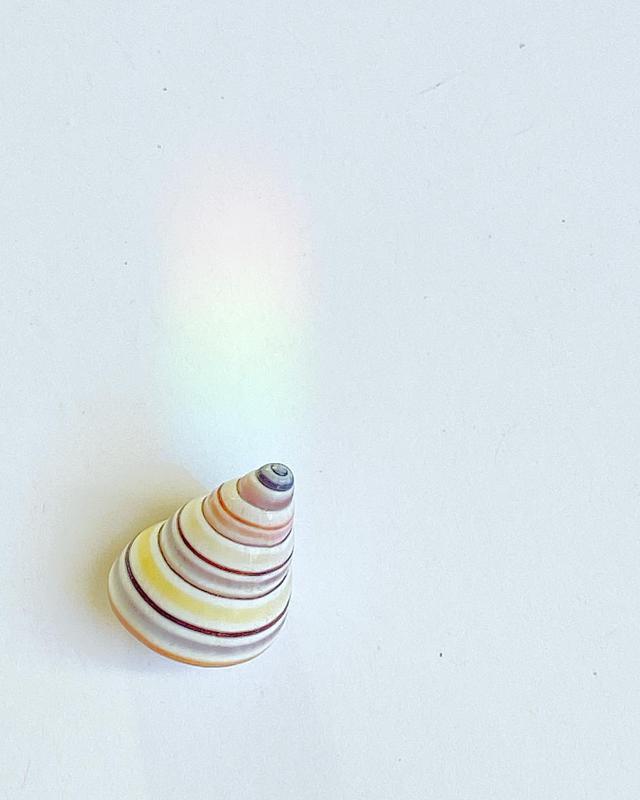
One of the most vibrant gastropods are candy cane snails. They feature a cute rainbow-colored stripy pattern on their white, conical-shaped shell. This kind of snail is common in the Caribbean and often inhabits the upper branches of trees. In the Florida Keys, candy cane snails have even been reported to have been discovered.
The moss, fungus, and algae that grow on tree bark serve as food for these tiny snails. The candy cane snail’s stunning shell has led to over-collection in the shell trade, virtually putting the snail in danger.
The Angustopila dominikae

The Angustopila dominikae is renowned for being the world’s tiniest snail. Its shell is gray in color and is less than 0.03 inches (0.86mm). This kind of snail inhabits cliffs and limestone caverns. They are often found in southern China, however they could be hiding elsewhere else in the globe.
Very little is known about this little snail since it is a recent find. Given that many animals like eating snails, their small size keeps it secure and protected. The robust shells of many other snails have developed defenses, but the Angustopila dominikae snail makes advantage of its size.
Nerite Snails
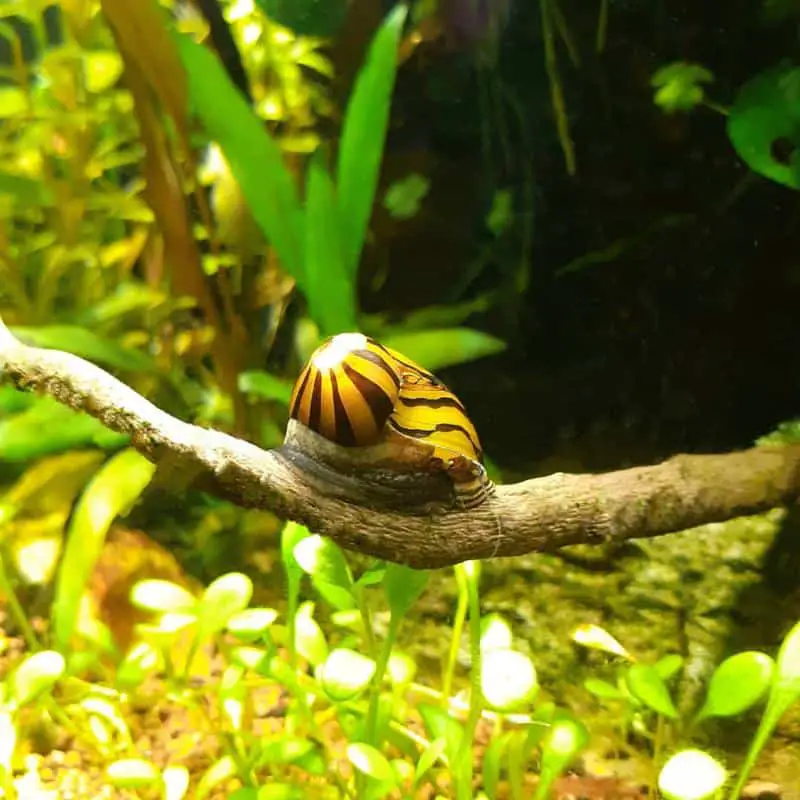
Since they consume algae, dead plants, and debris, nerite snails are a common addition to aquariums. This little snail is available in a variety of gorgeous colors and designs, one of which has horns! These little snails are a great addition to planted aquariums and shrimp tanks since they don’t consume live plants and their feces include bacteria that is good for shrimps’ digestive systems.
Although they have a lower life expectancy, they may survive for up to five years as pets. Make sure your tank cover is securely fastened since they like climbing out of the water!
Manus Island tree snail

The stunning brilliant green shell of the Manus Island tree snail has earned it the nickname “emerald green snail.” It is found on Papua New Guinea’s Manus Island, where it thrives amid trees in a wet jungle.
The population is declining as a result of overharvesting this kind of snail for commercial use and cutting rain forests. The IUCN Red List classifies the snail as near threatened, and it is protected by the Convention on International Trade in Endangered Species of Wild Fauna and Flora.
FAQs: Types of Snails
How Do Slugs and Snails Differ From One Another?
Although slugs and snails are quite similar, slugs often have interior shells as opposed to external shells. Snails have exterior shells because of evolution.
Slugs and snails vary from each other in terms of behavior and environment as well. Slugs can fit their shell-free bodies into a variety of places that snails cannot, such as under the bark of trees or within ground-level logs.
Snails are limited in size to 10 inches, but slugs may reach up to 15 inches. In contrast to slugs, snails are more often maintained as pets, which contributes to their longer lifetime.
Were you aware of:
Both slugs and snails are classified as gastropods, a term derived from the Greek words gastros (stomach) and podos (foot). This is a result of their undersides having a muscular, flat foot.
How Do Snails Conceive?
Since most snails are hermaphrodites, they may be either female or male. Asexual reproduction allows certain snails to reproduce on their own, but asexual reproduction may still be necessary for others. A mating pair of snails has the potential to produce offspring. An individual snail might have up to 90,000 grandchildren!
Is It Allowed to Own Pet Snails?
Snails do really make wonderful pets. They get along well with kids, are peaceful, and need little maintenance. They may be an eye-catching element in any space, and a basic setup is affordable. It is advised to maintain them in a roomy and well-ventilated enclosure. Though they can survive in humid environments, snails still need air to breathe.
Although certain varieties like to sit close to the lid and others to burrow under the earth, snails generally like to hide in dark places. Providing plenty of hiding places for snails is the best course of action. Include other elements such as plants, pebbles, and twigs in the arrangement. This improves the aesthetics of the tank and provides a more diversified habitat for the snail.
Before assembling your enclosure, learn more about the kind of snail you are acquiring. Each species of snail has a predilection for a certain environment. While some species are quite violent, others prefer to live with other members of their own kind. Some species are amicable toward other creatures.


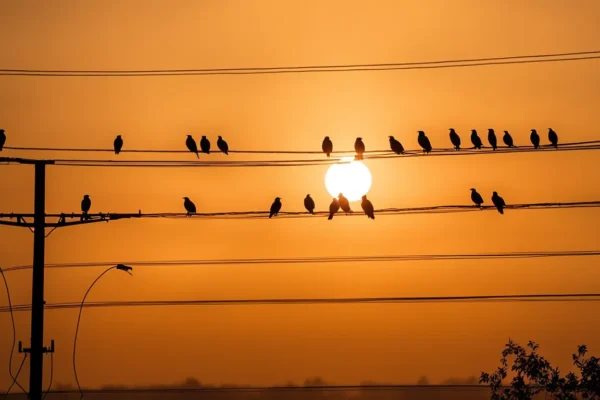


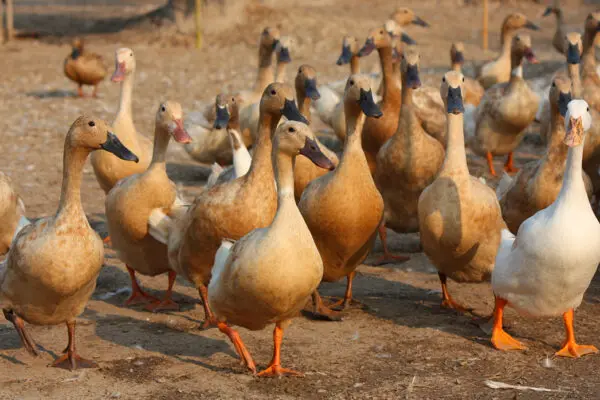

2 thoughts on “A Comprehensive Guide on Different Types of Snails”